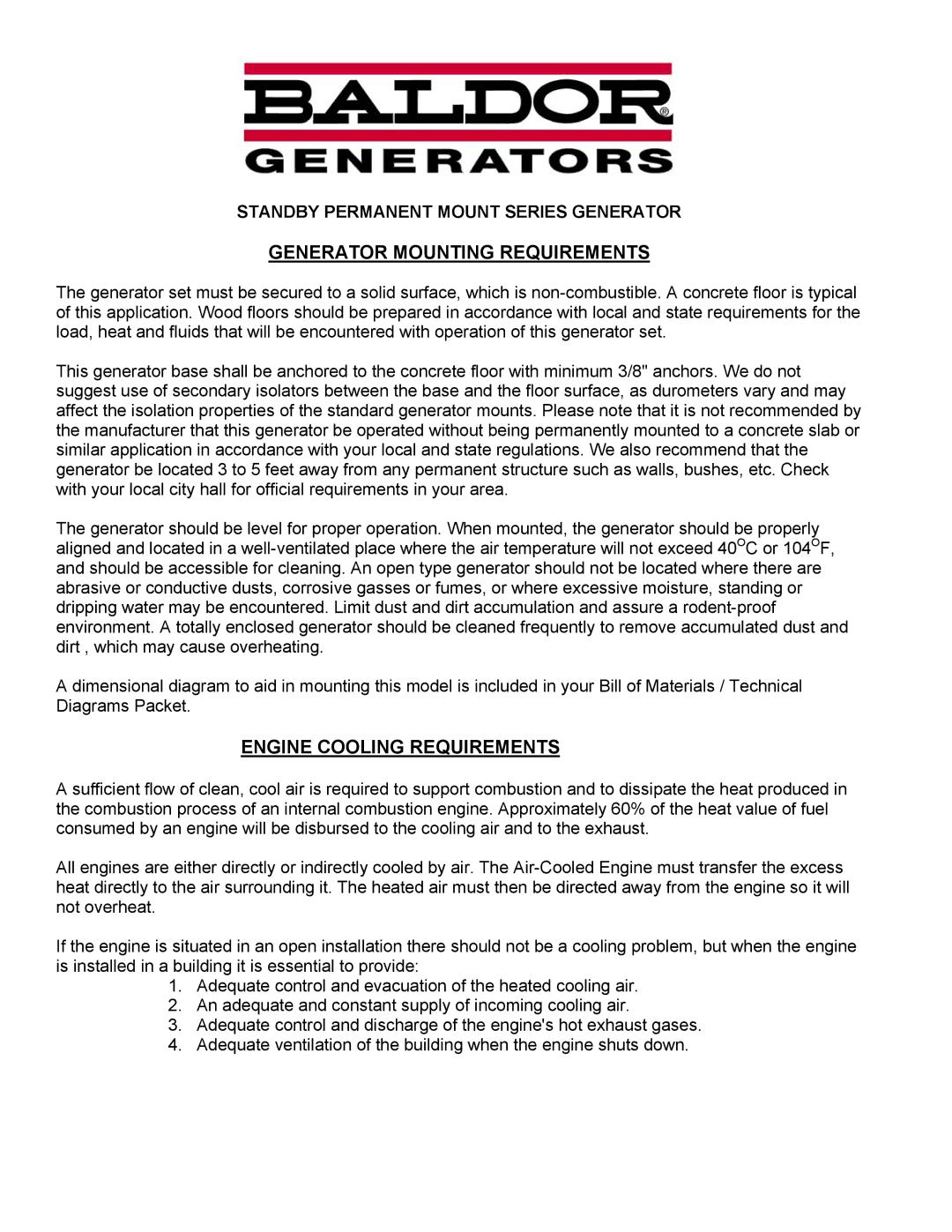
STANDBY PERMANENT MOUNT SERIES GENERATOR
GENERATOR MOUNTING REQUIREMENTS
The generator set must be secured to a solid surface, which is
This generator base shall be anchored to the concrete floor with minimum 3/8" anchors. We do not suggest use of secondary isolators between the base and the floor surface, as durometers vary and may affect the isolation properties of the standard generator mounts. Please note that it is not recommended by the manufacturer that this generator be operated without being permanently mounted to a concrete slab or similar application in accordance with your local and state regulations. We also recommend that the generator be located 3 to 5 feet away from any permanent structure such as walls, bushes, etc. Check with your local city hall for official requirements in your area.
The generator should be level for proper operation. When mounted, the generator should be properly aligned and located in a
A dimensional diagram to aid in mounting this model is included in your Bill of Materials / Technical Diagrams Packet.
ENGINE COOLING REQUIREMENTS
A sufficient flow of clean, cool air is required to support combustion and to dissipate the heat produced in the combustion process of an internal combustion engine. Approximately 60% of the heat value of fuel consumed by an engine will be disbursed to the cooling air and to the exhaust.
All engines are either directly or indirectly cooled by air. The
If the engine is situated in an open installation there should not be a cooling problem, but when the engine is installed in a building it is essential to provide:
1.Adequate control and evacuation of the heated cooling air.
2.An adequate and constant supply of incoming cooling air.
3.Adequate control and discharge of the engine's hot exhaust gases.
4.Adequate ventilation of the building when the engine shuts down.
